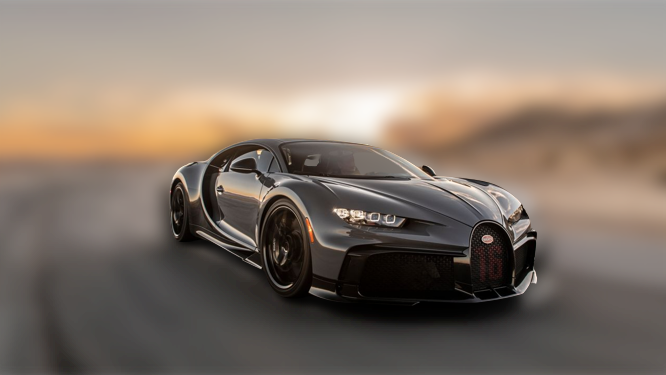Lotus Exige has another special-edition sports car. In less than a year, the British automaker made another one. This creation with their “cup” concept is lighter than its predecessor, the 2,447-pound Exige Sport 380. This time, we have a 2,330 pound, 175 mph masterpiece with a boosted downforce. That’s an amazing 43 percent higher than the Exige Sport 380s.
Say hello to the fastest, most extreme road car to date. This is the track-focused, little brother of Exige Sport 380, the Lotus Exige Cup 380. This car was made to go fast!
A car that is meant to be “used and enjoyed every single day” and be “capable of winning highly competitive races.” Exige Cup 380 is very usable and very fast – from track to home. No need for a vehicle hauler or a tow truck to have this brought from the racetrack. Lotus only wants strict observance of the speed limit.
Everyone is holding their breaths and moving as fast as they can. Only 60 Exige Cup 380s are going to be built. Sixty of these, not one more, is to be seen on the planet. Lotus is once again living up to its notorious low production status. Orders are being taken at $106,430.
What Makes Lotus Exige Cup 380 Faster?

As expected, power is delivered by its 3.5-liter V-6 engine, famously sourced from Toyota. It’s got 375 horsepower at 6700 rpm and a punchy 410 Nm (302 lbft) of torque at 5000 rpm. It laps the Hether track in only 1 minute 26 seconds. That’s a record. Hooray for this road-legal Exige.
Genius engineering design, and not just superb machinery, is obviously present. The engine is connected to an open-gate six-speed manual transmission. Its switch is located on the steering column. This feature is only available with the ESP switched off. The target wheel slip is from 1% to 12%. As is the standard for a close-ratio, six-speed manual transmission, it has the Exige range and Lotus’ open-gate manual gearbox design. Another standard is the fitted T45 steel roll-over bar.
Nitron adjustable dampers and Eibach adjustable anti-roll bars keep Exige Cup 380 manageable in a race track.The AP Racing four-piston brake calipers and two brake discs are responsible for making this cup stop.
Its agile body is also achieved by having the front louvers located over the wheels. This equalizes the pressure differential within the wheel arches. Thus, downforce is increased to high speed under hard braking. The cut-out sections behind the rear wheels work with the aero blades that are mounted on either side of the race diffuser. The Exige’s windscreen wiper is now also in a vertical position. This avoids disrupting air flow.
Its gills, fins and the enormous board spoiler on the back, plus the front bumper, channel the pressure that develops in the front wheel arches away and over the car. The cut-outs in the rear wheel arches direct air at either side of the standard race diffuser.
Lightweight as it is, it’s got a strong aluminum chassis. It’s got a carbon fiber high-gloss front splitter, bargeboards and diffuser surround. Likewise, its front access panel, roof, new larger aperture air-intake side pods are also of carbon fiber. A one-piece tailgate reduced weight by 6.5 kg.
How Lotus Further Made the Exige Cup 360 Slicker
With performance credentials assured, its dramatic aesthetic is another outstanding story.
Available are five fantastic hand finished paint options. Choose from Essex Blue, Metallic Silver, Metallic Black, Metallic White and Metallic Grey. Its canard wings are in matt black. The 285/30 ZR18 Michelin Pilot Sport Cup 2 tires, with increased mechanical grip, are fitted to ultra-lightweight forged alloy wheels available in red, black or silver.
The carbon magic continues inside. The detailed carbon race seats and door sills are standard. Exige Cup 380s instrument panel has new graphics that are easily read. Since Lotus’ aim is to keep it light, aero-optimised, the boot carpet is missing. Carbon fiber is also lining the back of the seats.
Optional work would include one-piece inner door panels, HVAC console and face-level vent surrounds. Expect a 1kg weight reduction with these. Another optional feature is a full exhaust system in titanium. This will remove 10 kg from beyond the rear axle. A towing eye at the front and a fabric tow strap at the rear are other racing additions. For other options, you may have an electronic cut-off non-airbag steering wheel. An FIA-spec roll cage and a fire extinguisher are also nice variations. Though the standard trim for the seats is Alcantara, leather or tartan can be swapped for free with contrast stitching. Exige Cup 360 comes with an Alcantara steering wheel.
Through the Lotus Exclusive program, 25% of all new cars had undergone personalization since its introduction. Negativity aside, Lotus is expecting also a lot to avail of this program with Exige Cup 360.
Driving Performance
Purity of driving experience is also courtesy of its power-to-weight ratio of 355 hp per tonne.
It’s got four selectable EXP modes: Drive, Race, Sport and Off. Sport, Race and Off provide a finer degree of driver control before intervention.
The Lotus Exige Cup 380 includes a changeable traction control function. Linked to the ECU, it allows the amount of wheel slip to be set by the driver.
A lower traction slip threshold removes understeer recognition through an engine exhaust bypass valve. This reduces exhaust back pressure at higher speeds.
So far, Lotus Exige Cup 380 is the fastest Exige. Who knows for how long? It was only November last year when they turned up Exige Sport 380. Sadly, Exige Cup 380 isn’t road-legal in the U.S. At least, that sounds a little comforting. There’s nothing to be envious of when you see one on U.S. roads. Hopefully time comes when something like Lotus’ ballistic Exige Cup 380 becomes legal here. It’s time we got amazed.
Related Posts
Jeep Wrangler Rhino XT Review
2017 Audi S5 Review
2018 Mercedes AMG GT C Roadster Review








